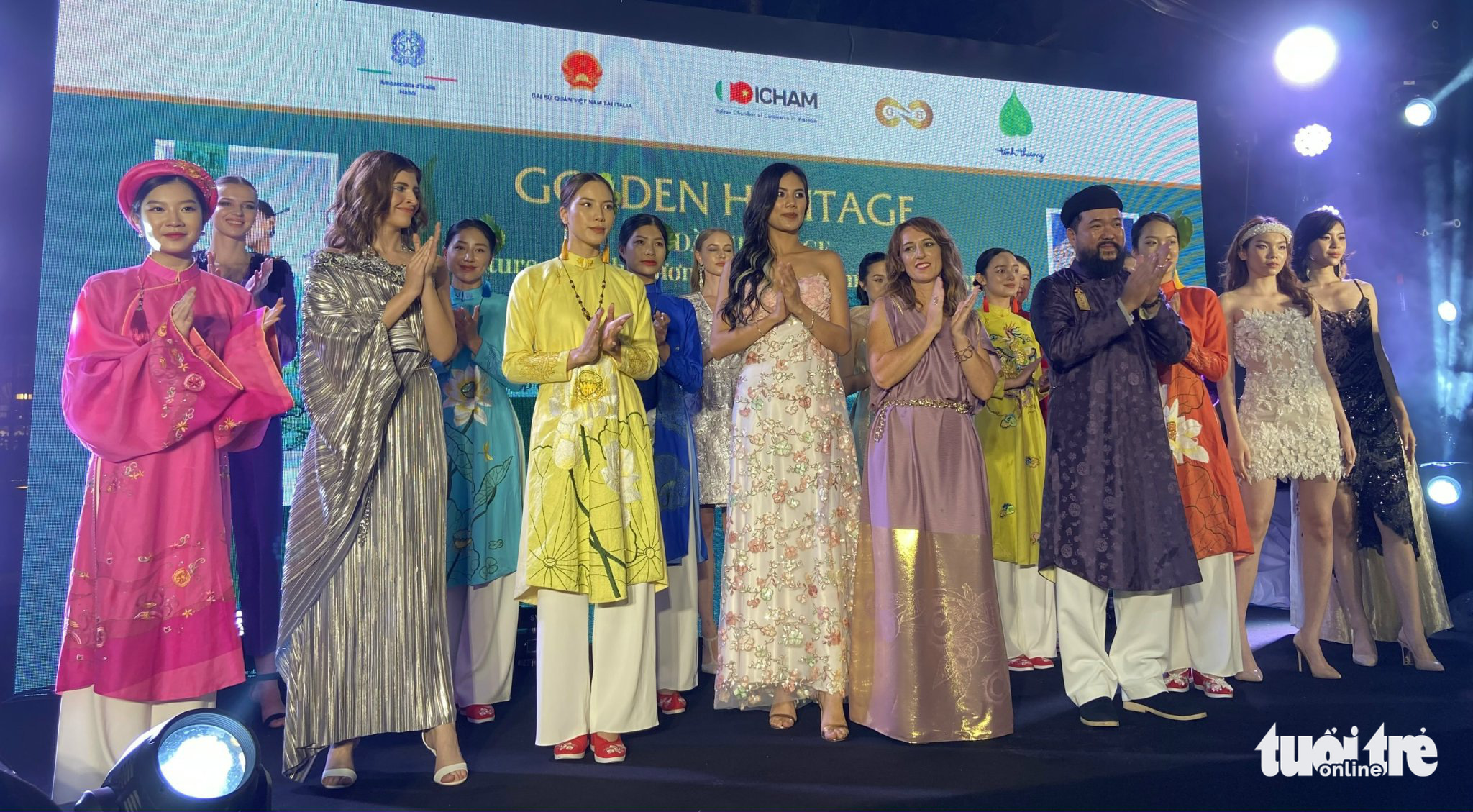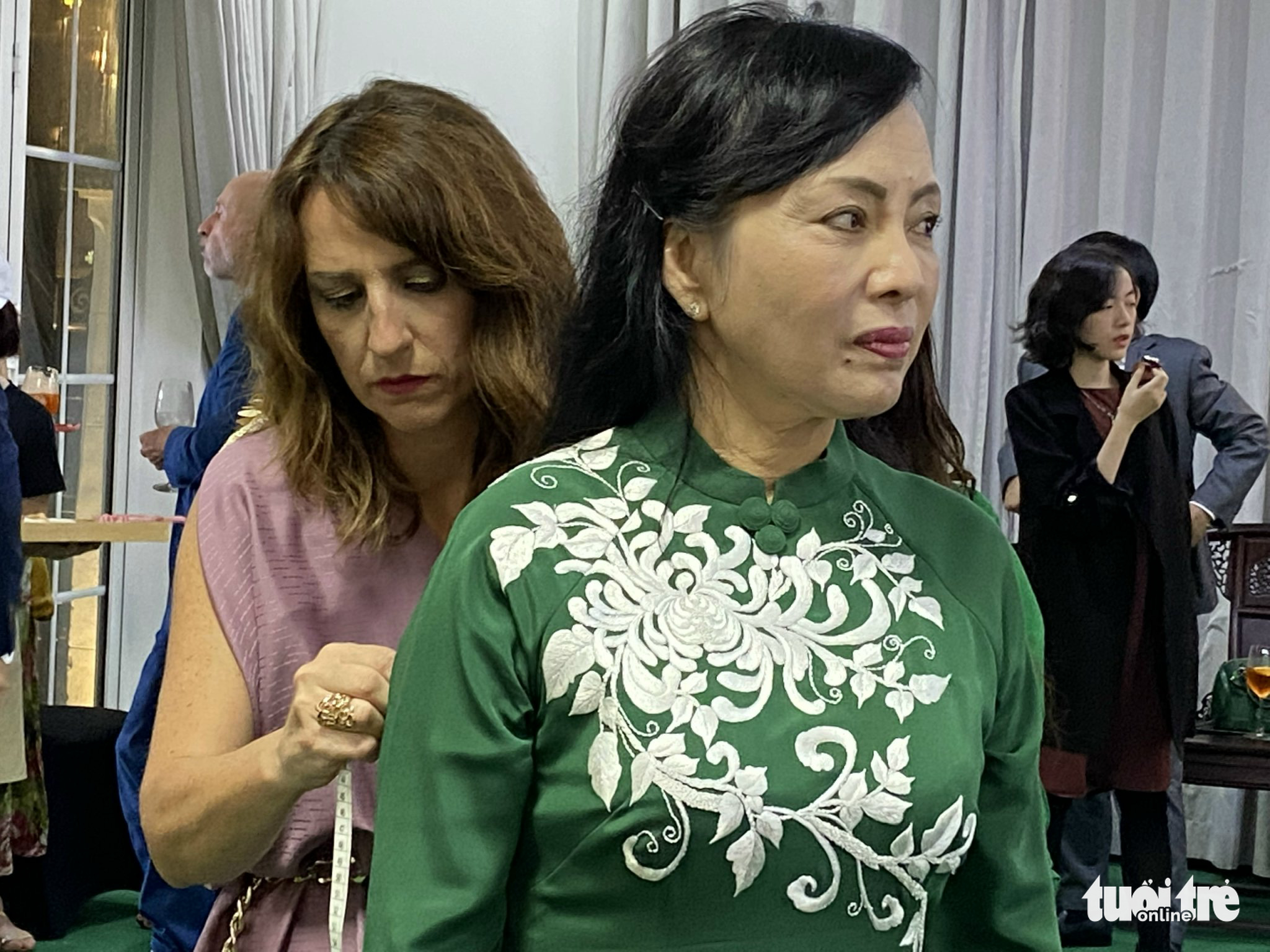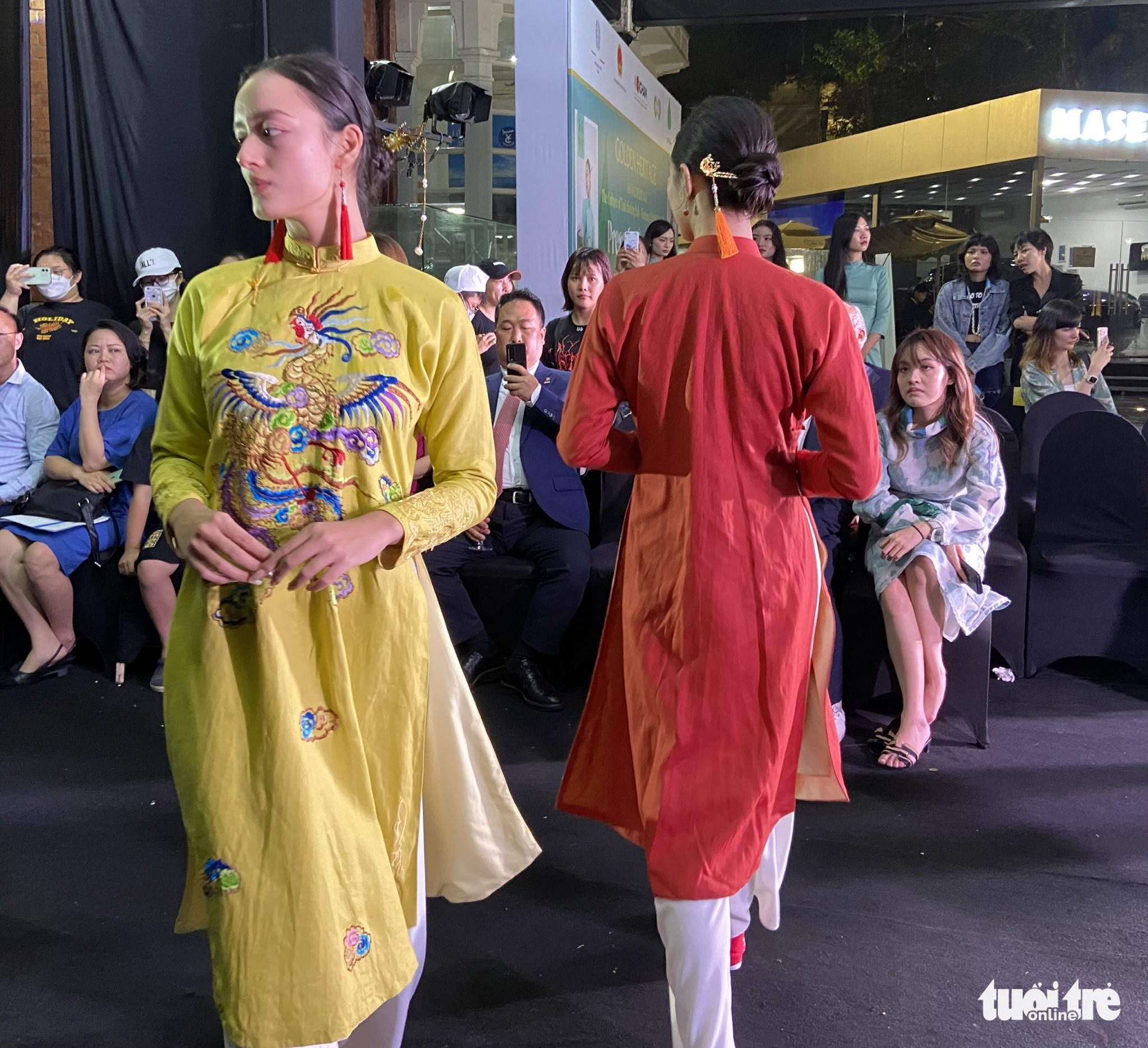Italian designer modernizes Vietnamese ‘ao dai’ to captivate Europeans | Tuoi Tre News
Italian designer modernizes Vietnamese ‘ao dai’ to captivate Europeans

Italian designer Maria Elena Di Terlizzi and her Vietnamese peer Quang Hoa have tailored 60 ‘ao dai’ for a showcase in Rome in March 2023, with a view to winning the hearts of European customers.
The ‘ao dai’ designs are part of the Ao Dai Heritage - Culture of Love project implemented by Golden Heritage Group, the Italian Embassy in Hanoi, the Vietnamese Embassy in Rome, and the Italian Chamber of Commerce in Vietnam.
The project aims to promote ‘ao dai’ to the international fashion market while applying the quintessence of Italian international technology to the making of the Vietnamese traditional long gown.

‘Ao dai’ easily catches the attention of foreigners, according to Huy Thanh, a member of Golden Heritage Group.
“‘Ao dai’ can tell the world a lot about Vietnam,” said Thanh.
The 60 new costumes were showcased at an event in Hanoi on Thursday night and scheduled for display shows in Rome and other famous heritage cities around the world.
Italian designer Maria Elena contributed 45 designs to the collection while the rest were made by her Vietnamese counterpart Quang Hoa, hailing from Hue City in central Vietnam, which has been dubbed the capital of ‘ao dai.’
“A very feminine and elegant outfit, it requires the wearer to follow implicit rules and certain cultural norms,” Elena said.

Elena plans to adjust the form of ‘ao dai’ to make it more comfortable, as well as use new Italian materials to bring certain comfort to wearers, creating a more youthful, modern, and convenient appeal for the traditional costume.
She showed great confidence in the potential of the ‘ao dai’ renovation project in the European market, where female customers love to try new experiences.
Currently, she has established a network of customers who are interested in the Vietnamese garment.
“I’m here to learn Vietnamese traditions and bring European modernity into the Vietnamese ‘ao dai,’ making it a popular clothing choice for everyone,” said Elena.







